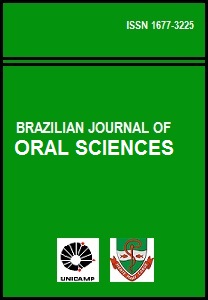Abstract
The development of oral implantology has led to the establishment of various image-acquisition methods as important surgical diagnosis tools, such as linear (LT) and cone beam computed tomography (CBCT), indicated for planning implant placement surgeries. However, there still is little information in the literature regarding details on the difference between the accuracy of these methods. Aim: The aim of the present study was to assess the difference between the accuracy of LT and CBCT in measuring ridge bone width. Methods: A sample of ten human skulls was used, totaling 40 edentulous sites, marked with 2-mm gutta-percha balls in the buccal and lingual plates. Buccal-lingual measurements of ridge width were performed on the images of both tomography types. Direct caliper measurements were used as control values, to which all LT and CBCT measurements were compared. Results: CBCT images showed significantly more accurate results in comparison with the direct caliper measurements (p<0.05). Conclusions: CBCT proved more reliable than LT regarding ridge bone measurements for dental implant planning.The Brazilian Journal of Oral Sciences uses the Creative Commons license (CC), thus preserving the integrity of the articles in an open access environment.
Downloads
Download data is not yet available.

